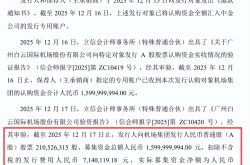Multiphoton microscopy imaging technology XLV Piston-based specimen holder for rapid surgical and biopsy specimen imaging
![]() 09/13 2024
09/13 2024
![]() 506
506
Although multiphoton microscopy can provide rapid and real-time histological images, the placement and clamping of fresh tissue samples has always been a challenge. If multiphoton microscopy is to be used for clinical diagnosis, it becomes even more difficult to mount the fresh tissue in the standard orientation required for diagnosis. For samples with a small contact area, such as long and narrow biopsy samples with a high aspect ratio, attempting to flatten the sample downwards can cause it to tip over or wrinkle, leading to uneven sample contact and incomplete assessment. To address these issues, this article introduces a piston-based specimen holder that exerts a consistent and uniform pressure on the sample surface, allowing various shapes and sizes of samples to be clamped for successful multiphoton imaging [1]. Figure 1 shows the piston-based specimen holder. A coverslip is glued to the bottom of the specimen holder, the tissue sample is placed in a groove above the coverslip, and a flexible rubber membrane is pressed onto the sample by a retaining ring. A thin paper core is placed between the rubber membrane and the tissue, which absorbs liquid and reduces water gaps between the tissue and the coverslip. The enclosed space above the rubber membrane in Figure 1(B) is inflated using a syringe, providing a uniform pressure on the rubber membrane to compress the tissue.

Figure 1 Piston-based specimen holder [1]
The biopsy samples mentioned above, which are typically evaluated in the strip direction with a relatively small contact area compared to the tissue height, are difficult to apply uniform pressure to. To address this, they developed a support frame to secure biopsy samples (Figure 2). As shown in case 1 in Figure 2(B), thin samples with a small contact area (thickness < 1 mm) can be supported by the sides of the support frame to stand upright during the imaging phase, with the support structure redistributing downward pressure laterally. As shown in case 2 in Figure 2(B), for tissues with a relatively large contact area that can stand independently on the sample stage, the support structure prevents the tissue from being crushed. The volume of air injected through the syringe controls the deformation of the membrane, which can be adjusted based on the shape of the tissue. For example, in case 1, a large volume of air is injected to achieve greater membrane deformation, while in case 2, lower pressure is required, and a smaller volume of air is injected to reduce membrane deformation.

Figure 2 Support frame for securing biopsy samples [1] Applying uniform pressure to freshly excised surgical samples can cause opposing tension in the tissue, causing the edges to curl upwards and fold, making it impossible to fully assess the tissue (Figure 3). The article proposes that making incisions in the tissue disrupts this tension transmission. They found that simple shallow triangular incisions made on the surface roughly following the shape of the sample were relatively effective (Figure 3B).

Figure 3 Tissue relaxation cutting scheme [1]
Finally, they used the designed specimen holder and support frame in combination with two-photon fluorescence imaging to evaluate the resection margins of skin cancer surgery. They found that the true resection margins obtained by imaging fresh tissue differed from those obtained from frozen sections commonly used in hospitals. Tissue lost during the sectioning process of frozen sections may represent the true surgical margin, and excessive tissue loss may alter the resection margin status, leading to a certain probability of misdiagnosis of the resection margin in frozen section analysis. The piston-based specimen holder proposed in this article, combined with multiphoton microscopy, allows rapid imaging of fresh tissue directly without sectioning, enabling accurate assessment of the true resection margins of tumor resection surgery and reducing the false positive rate associated with frozen section analysis.
References
[1]Huang, Chi Z., et al. "Piston-based specimen holder for rapid surgical and biopsy specimen imaging." Biomedical Optics Express 15.5 (2024): 2898-2909.





